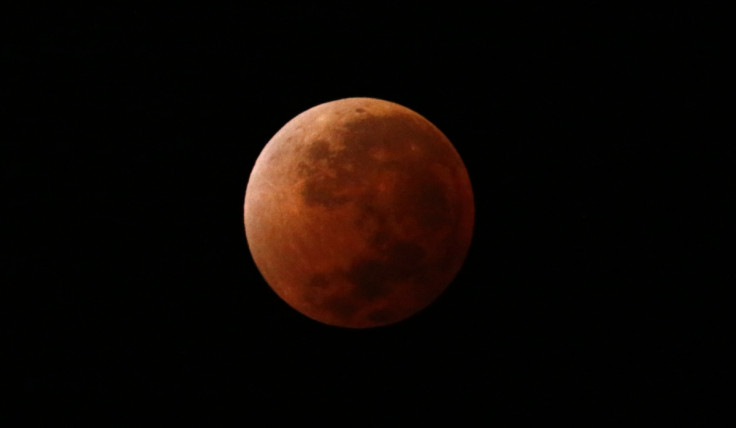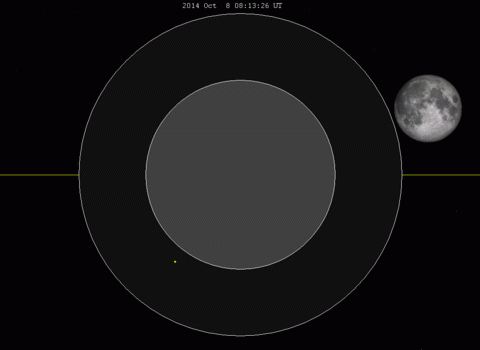Blood Moon 2014: Pre-Halloween Total Lunar Eclipse Will Turn The Moon Blood Red [LIVE VIDEO]

The Blood Moon is back and it's bigger and better than before!
A pre-Halloween total lunar eclipse on Wednesday, October 8, will turn the moon a burnt reddish orange for about an hour. Skywatchers across much of the world will have the chance to witness the second Blood Moon this year, reports Space.com.
On the East Coast of the United States, the full eclipse will start at 6:25 am EDT, but people on the West Coast of the US will have an even better chance of seeing the rusty glow of the moon during the total eclipse.
The event will occur between 3:25 am PDT and 4:24 am PDT Wednesday. Observers in Australia and countries along the Pacific Ocean will also have the chance to witness the eclipse. Click here to find out the eclipse timing, for your region.
"It promises to be a stunning sight, even from the most light-polluted cities," Nasa eclipse expert Fred Espenak said in a statement. "I encourage everyone, especially families with curious children, to go out and enjoy the event."
Next week's eclipse is the second in a so-called total lunar eclipse tetrad, a series of four consecutive eclipses that began earlier this year. The first total eclipse tetrad occurred on April, 2014 (video below).
The next total eclipse in the series will occur on April 4, 2015, and the fourth eclipse will rise on 28 September, 2015.
According to the Nasa, during total lunar eclipses, the moon passes into Earth's shadow, causing the planet to darken the face of the moon. Instead of making the moon go completely dark, the moon shines with a rosy hue during a total eclipse because it reflects light from the sun coming through Earth's atmosphere.

Apart from the eerie red pallor, observers have also claimed to catch a hint of blue in the moon's colour during the eclipse. According to atmospheric scientist Richard Keen of the University of Colorado, the sun hitting the upper stratosphere can explain this odd colour contrast.
"During a lunar eclipse, most of the light illuminating the moon passes through the stratosphere, where it is reddened by scattering," Keen said. "However, light passing through the upper stratosphere penetrates the ozone layer, which absorbs red light and actually makes the passing light ray bluer."
The blue colour — which can sometimes be seen on the rim of Earth's shadow against the moon — is best observed through a small telescope or binoculars during the first and last moments of totality, Keen added.
You can watch the Total Lunar Eclipse on October 8, 2014 Live Stream below:
Here is a video of the April 2014 Blood moon:
© Copyright IBTimes 2025. All rights reserved.






















